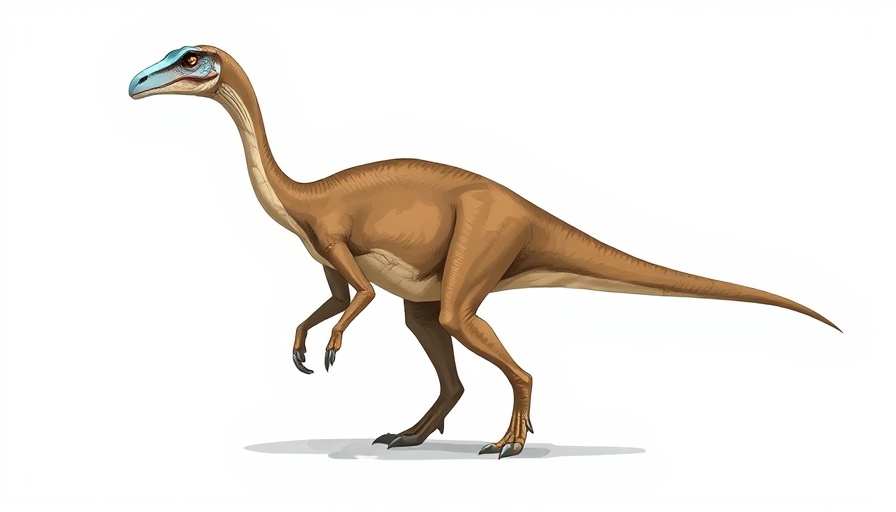
Unraveling the Mystery: Bone Disease in Dinosaurs
The fascinating world of paleontology rarely ceases to amaze, and a recent study has shed light on a tragic chapter in the lives of long-necked dinosaurs known as sauropods. Found in Ibirá, São Paulo, Brazil, researchers have unearthed fossil evidence indicating that these majestic creatures fell victim to osteomyelitis, a grave bone disease that wreaked havoc approximately 80 million years ago. This discovery not only provides insight into the health challenges faced by these ancient giants but also outlines how environmental factors contributed to their demise.
The Science Behind Osteomyelitis: What Caused the Outbreak?
Osteomyelitis can be triggered by a variety of pathogens including bacteria, viruses, fungi, or protozoa. The fossils examined indicated that six individuals suffered from this disease without displaying any signs of bone regeneration at the time of death, suggesting they succumbed to the infection. Tito Aureliano, a lead researcher from the Regional University of Cariri (URCA), noted that the lack of regeneration in these sauropod bones raises intriguing questions about the state of their ecosystem. "The study of these fossils provides a unique window into how diseases could spread within groups of similar organisms during this period," he explained.
Environmental Conditions: A Perfect Storm for Disease
About 80 million years ago, the region that is now São Paulo may have provided optimal conditions for pathogens to thrive. Factors such as climate, flora, and fauna likely played a crucial role. The study's findings imply that these long-necked dinosaurs lived in an environment conducive to disease, which could have escalated rapidly among the population. This realization opens doors to understanding how various life forms faced challenges in prehistoric settings.
Connecting the Dots: Why This Discovery Matters
What does this mean for our understanding of ancient ecosystems? The discovery of the bone disease not only highlights the complexity of ecological relationships but also emphasizes the fragility of life, even among the most dominant species. It gives scientists like Aureliano critical insights into how diseases may have influenced dinosaur evolution and extinction rates, drawing parallels with modern biodiversity crises due to emergent diseases.
The Broader Implications: Lessons from the Past
This case mirrors contemporary issues where climate change and habitat destruction can exacerbate disease outbreaks in existing wildlife populations. Understanding how diseases impacted ancient species can provide valuable lessons for current conservation strategies. Just as sauropods faced challenges millions of years ago, today's species also require attention to prevent similar fates.
Frequently Asked Questions: Understanding Osteomyelitis
Q: What is osteomyelitis?
A: It is an infection in the bone that can arise from various pathogens.
Q: How does this discovery affect modern paleontology?
A: It enhances our understanding of disease dynamics in past ecosystems and may guide current conservation efforts.
Final Thoughts: Encouraging Further Research
The discovery of osteomyelitis in sauropods tells an essential story about survival and the challenges faced by these remarkable creatures. As we delve deeper into paleontological studies, it becomes crucial for the scientific community to draw connections between past events and present day challenges. By acknowledging the lessons from history, researchers can better inform current practices in wildlife conservation and public health strategies, fostering resilience in the face of disease.
This discovery serves as a reminder of the interconnectedness of all life forms and the importance of maintaining healthy ecosystems. For those excited about the exploration of ancient histories and their relevance to today, staying informed on ongoing paleontological research can offer fascinating insights.
 Add Row
Add Row  Add
Add 




Write A Comment